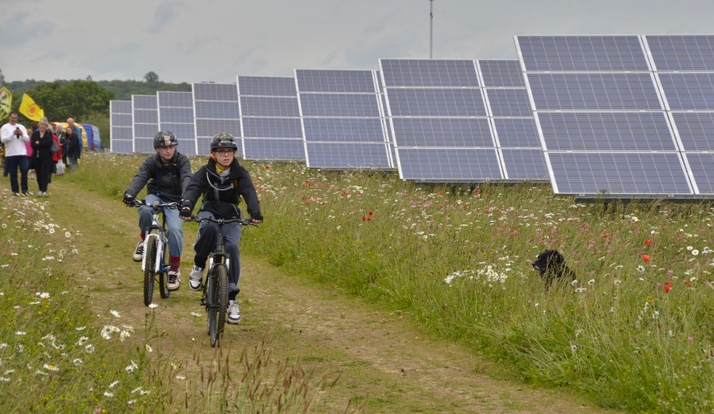If you have solar panels on your roof you can get money for the electricity you generate that you don’t use. How does the so-called feed-in tariff (FIT) scheme work? Find out if it’s worth generating your own energy.
Feed-in tariff scheme
The FIT scheme is available to anyone who has installed, or is looking to install, one of the following (up to a capacity of 5MW, or 2kW for CHP): solar photovoltaic, wind, micro combined heat and power, hydroelectricity and anaerobic digestion.
SAVVY TIP: On July 19th, the Department of Business Energy and Industrial Strategy published a consultation which stated their intention to close the FIT scheme to new applicants from April 1st 2021, barring several exceptions. You can read a FAQ document on Ofgem’s website.
Feed-in tariff rates
The FIT rates originally announced by the previous government were 43p per kwh, which applied to all solar panels registered (installed) before March 3rd 2012. Since then, the rates have dropped dramatically. So, for example, a standard solar photovoltaic receiving the lower rate and installed after February 8th 2016 would receive 0.25p per kwh.
FIT rates are dependent on the type of energy production method you install, the eligibility (or commissioning) date and the Energy Performance Certificate rating (for solar energy). You can find a list of the current FIT rates on Ofgem’s website.
If you are generating electricity mainly for your own use, you will not be liable for income tax. The rate is guaranteed for 20 years and will rise annually in line with the retail price index.
Energy efficiency comes first
There’s no point in generating energy in an environmentally friendly way only for it to go to waste, so make sure you improve the energy efficiency of your home before you think about generating renewable energy. The Energy Saving Trust has a section on energy saving tips with lots of useful information.
Grants and loans
Grants are no longer available for renewable energy installations, but interest-free loans are available for renewable technologies for people living in Scotland through the Home Energy Scotland Loan scheme. Grants are available for energy efficiency improvements.
Generating energy from solar panels
It’s worth bearing in mind that different energy suppliers will pay different amounts for energy you produce. The Energy Saving Trust has a cashback calculator, which tells you how much you’ll be able to earn through solar panels etc.
SAVVY TIP: The website Yougen has lots of useful information about generating your own energy.
How much will it cost to install?
According to the Energy Saving Trust website, these are typical costs:
Solar thermal (which heats hot water): costs from £4,000- £5,000 including VAT, to install. Eligible under the Renewable Heat Incentive and if you live in Scotland, you may be eligible for an interest-free loan of up to £5,000.
SAVVY TIP: The cost savings are modest at around £50 – £95 a year, according to the EST. You may be able to receive payments for the heat you generate, from £200 to £485 per year.
Wind turbines: cost from up to £3,000 including VAT for a small roof-mounted system and £9,900 to £30,000 including VAT for larger pole-mounted systems. Eligible under the feed-in tariff scheme, but this will be closed for new applicants from 1st April 2021. If you live in Scotland, you may be eligible for an interest-free loan of up to £2,500.
SAVVY TIP: Planning permission (opens as a pdf) has been simplified for solar panels and biomass boilers, but permission may be an issue for a wind turbine. You can expect to generate an income of around £1,500 a year.
Solar photovoltaic (PV) which generates electricity: cost between £5,000 to £8,000 including VAT. You could save between £85 to £220 a year, depending where you live. You could generate an income of between £115 and £160 a year. Eligible under the feed-in tariff scheme, but this will be closed for new applicants from 1st April 2021. If you live in Scotland, you may be eligible for an interest-free loan of up to £5,000.





Thank you for reading, if you liked the article and found it useful please share it with your friends and loved ones
We think it's important you understand the strengths and limitations of the site. We're a journalistic website and aim to provide the best Savvy Money Saving guides and tips, but can't guarantee to be perfect, so do note you use the information at your own risk and we can't accept liability if things go wrong.
We often link to other websites, but we can't be responsible for their content.
If a link has an * by it, that means it is an affiliated link and therefore it helps Joyful Wisdom With Jane stay free to use, as it is tracked to us. If you go through it, it can sometimes result in a payment or benefit to the site. It's worth noting this means the third party used may be named on any credit agreements.
This site is not a part of the Facebook website or Facebook Inc. Additionally, this site is NOT endorsed by Facebook in any way.